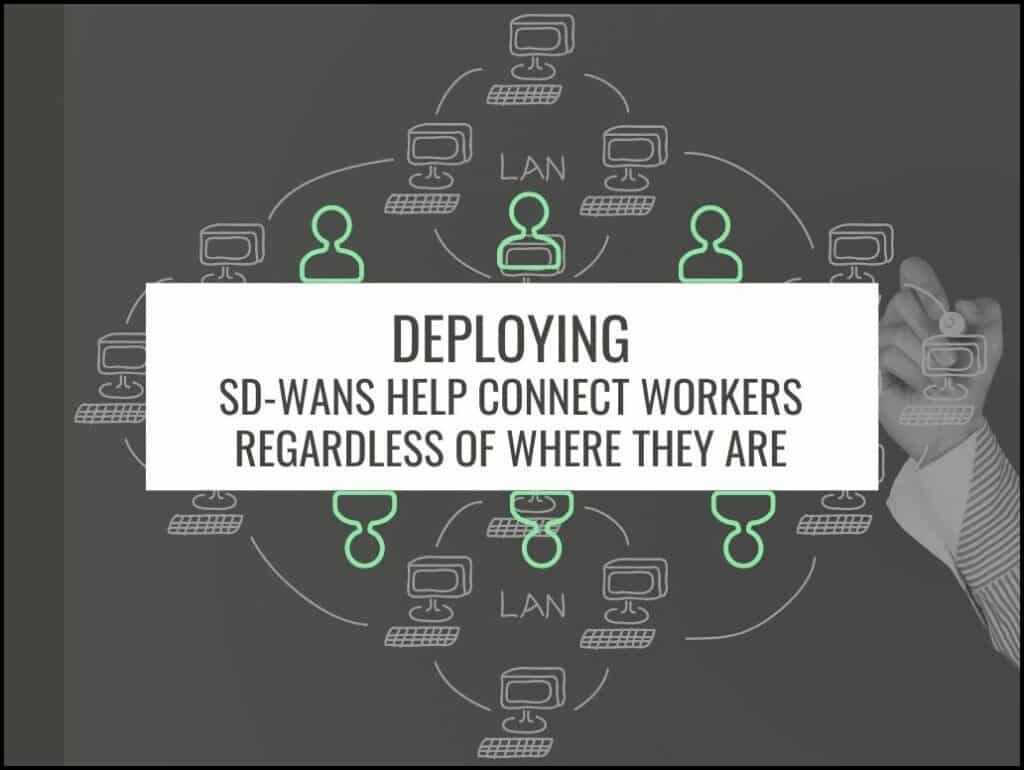In today’s modern digital age, the software is a key innovator that helps push hardware to the next level. Employees working at the same company are becoming more geographically dispersed and mobile, creating new technology challenges that businesses must keep up with.
Regular wide area networks (WANs) are often expensive and rather clunky to deploy in field branch offices. These days, a popular alternative is the use of software-defined WANs (SD-WANs), with plenty of SD-WAN benefits available to information technology (IT) managers and corporate leaders to consider.
The SD market is expected to grow from $2 billion in 2020 to $2.85 billion in 2021, and will balloon up to $4.8 billion in 2024, according to a report from Futuriom.
A continued shift away from on-premise technology to cloud-based software as a service (SaaS) solution means giving workers – regardless of location – quick access to the tools they need to use to complete their jobs. However, optimizing and managing infrastructure based in the cloud has led to some IT hiccups continuously being worked on to improve efficiency.
Organizations believe SD-WAN is an ideal way to ensure their networks are efficient, more agile, and easily configurable at a time when resources can sometimes be extremely scarce. For companies unable to keep up with increasing bandwidth demands, SD-WAN technology lets them allocate additional network capacity instead of reconfiguring their multiprotocol label switching (MPLS) to make up for any slack.
The ability to let people work remotely but still have access to the necessary services is essential. MPLS in a remote office or a worker’s household is rather expensive. However, SD-WAN’s ability to offer a secure VPN is one reason why analysts believe the market will grow continually.
At its core, SD-WAN is a centrally-managed network providing organizations with the opportunity to deploy lower-cost network solutions, such as broadband or wireless networks. Ideally, SD-WANs can easily connect workers to devices and networks across multiple locations – with data that is hosted by cloud providers or stored in data centres.
SD-WANs can successfully use the data centre, but the data centre is no longer the cornerstone of the network’s success. Instead, virtualized solutions help offer companies new tools, with SD-WANs designed to help boost employee productivity with little disruption.
Decision-makers must have real-world, achievable goals when it comes to what they hope to accomplish by deploying any network in their environment. For example, an SD-WAN is an ideal solution for companies trying to ensure their employees can have efficient and reliable access to cloud-based tools that help them complete their day-to-day tasks.
However, it’s noteworthy to keep in mind that some rollout considerations must be made when replacing a legacy network, or adding SD-WAN to an existing network. Before actually trying to adopt SD-WAN, companies must have real-world use cases in mind that they are trying to achieve, even if they are still not 100% certain about the exact outcome they’re looking for. It’s also absolutely vital to evaluate what internal resources are already in place – and what must be acquired in the future – because the SD-WAN network will still need appropriate network monitoring.
A company will use numerous WAN connections from pooled bandwidth that can be shared to each remote location, based on current need and availability. Both deployment and management of SD-WAN networks tend to be fairly streamlined and straightforward because of reliance on automation and integrated monitoring tools.
There Are Some Considerations to Keep in Mind
There is a concern related to SD-WAN cybersecurity, though technology promoters say that SD-WAN isn’t a security vulnerability. Critics note that because SD-WAN network traffic isn’t scanned for any vulnerabilities when entering the network, it’s a significant security risk – though it’s realistically not any more insecure or secure than regular WAN traffic.
Also, organizations adopting SD-WAN can utilize a third-party traffic screening solution installed on the edge of the SD-WAN network. These services focus on threat assessments, digital firewalls, and other methods to secure traffic as it travels across the WAN properly.
Final Thoughts
Businesses must adapt to changing technology trends when their teams become more decentralized, with new technology trends emerging. Attempting to transition to a fully digital workplace might not be a realistic goal for every company. Still, there are options available if decision-makers want to switch some bandwidth from their current on-prem heavy infrastructure.

Leave a Reply
You must be logged in to post a comment.